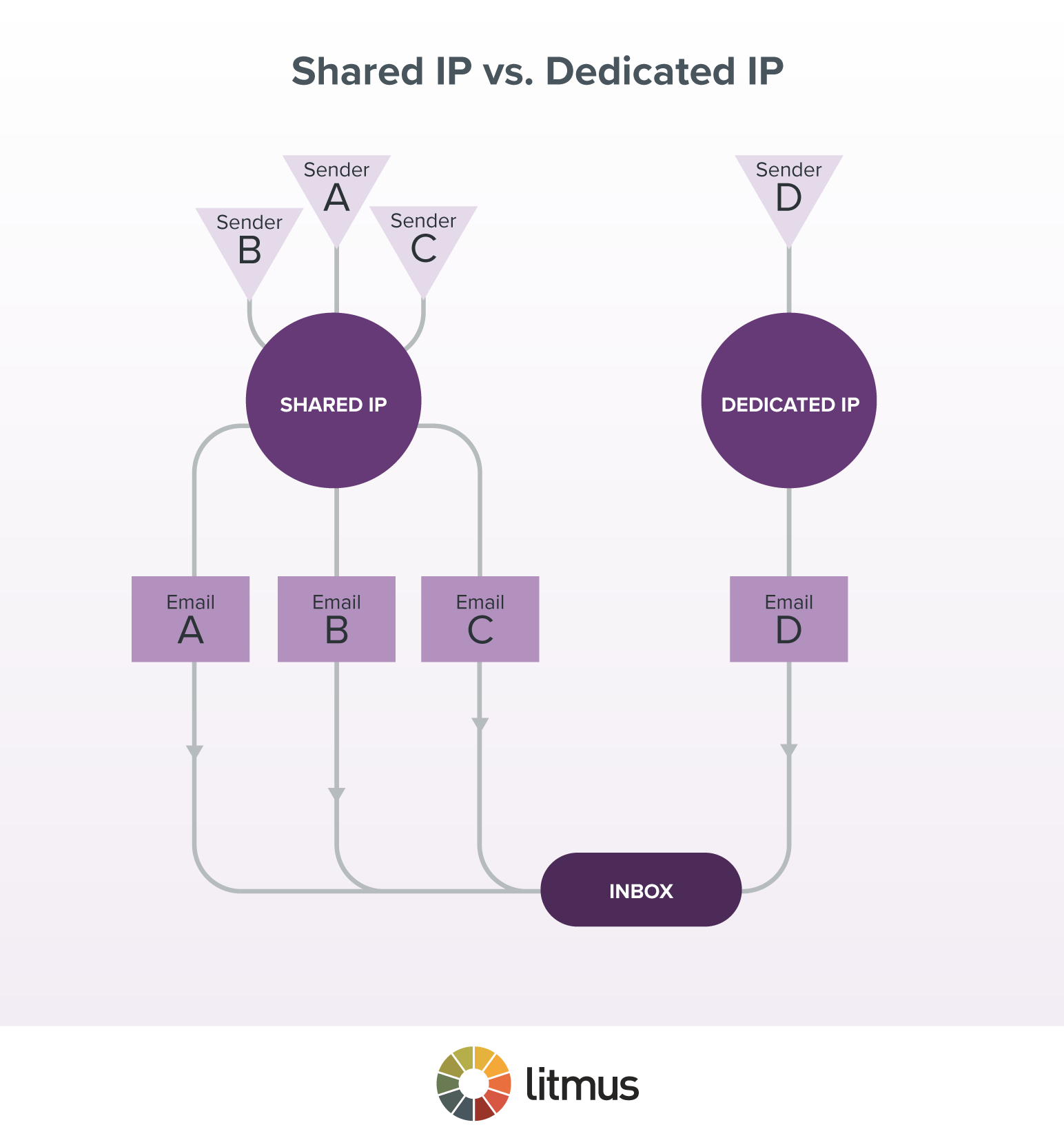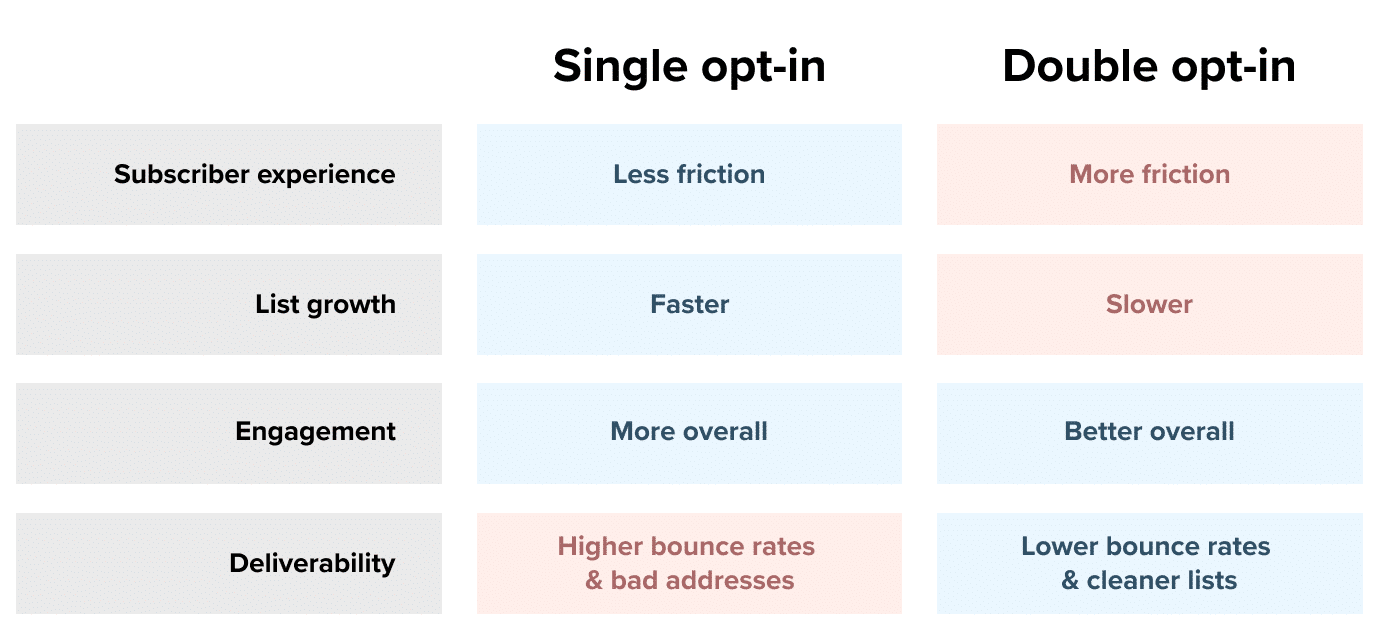Email Deliverability: What It Is & How to Improve It
Planning, creating, and testing an email is a huge undertaking, and getting it to your subscribers’ inboxes is the final push until it’s out of your hands. Getting your message to your audience isn’t as simple as hitting ‘send,’ however.
Every email is an opportunity to connect with your audience and positively impact your company—but only if it makes it to their inbox. Email deliverability is the final push to ensure your hard work doesn’t end up in spam, and it’s a complex dance.
You want to make every send count—especially if your team has to do more with less or is, like many of us, facing ever more attention-competition in the inbox.
This guide explores what email deliverability is, and how to improve it, in order to make every send count.
What is email deliverability?
Email deliverability gauges whether or not your email makes it into your subscribers’ primary, social, or promotional inboxes—and not the spam folder.
It’s important to understand the difference between email delivery and deliverability. While the words are frustratingly similar, the criteria are not.
Email delivery measures whether your emails make it to subscribers and don’t bounce. This metric can indicate your email list health, but it isn’t the whole story since a ‘delivered’ email could be in the spam folder. Your subscribers likely won’t see your message if it lands in spam, which is why email deliverability is a critical measure.
Importance of Email Deliverability
Email deliverability is an ongoing effort that’s worth the time and attention. Here’s why email marketers should care about email deliverability.
Reach your audience
Your subscribers have to see your emails to enjoy them! Good email deliverability ensures subscribers see the email campaign they signed up for.
Build trust and reputation
Each time you send an email, you’re investing in or spending trust with your audience. When subscribers receive the email they signed up for in their primary inboxes (not the spam folder), you build credibility as a brand.
Maximize email marketing ROI
When you realize that each email you send has a cost and, more importantly, a potential ROI of $36 for every $1 spent, ensuring every email makes it to the inbox seems advantageous.
Enhance engagement and conversions
The higher your email deliverability, the higher your potential email engagement. And the higher your email engagement, the more you can drive traffic and sales.
Maintain customer relationships
Consistently showing up in your subscribers’ inboxes builds brand love to increase the longevity of the customer relationship.
What are key metrics for email delivery?
Email marketing deliverability is essential for maximizing your budget and effort, and a good email deliverability rate begins with monitoring. Here are metrics you should review to ensure strong deliverability and pinpoint issues:
- Delivery rate: the percentage of emails the internet service provider’s (ISP) servers did not return or bounce
- Bounce rate: the percentage of emails with temporary or permanent unsuccessful delivery
- Spam complaint rate: the percentage of your audience who mark an email as spam
- Open rate: the percentage of your delivered emails that subscribers opened
- Click-through rate (CTR): the percentage of how many people click on a call-to-action in your email
- Unsubscribe rate: measures how many people opt out of your emails
- Inbox placement rate (IPR): the percentage of your emails that make it to the inbox and not the spam folder
- Sender reputation: a mix of factors that inbox service providers (ISPs) use to gauge whether you’re a trustworthy sender
What factors affect email deliverability?
Think of each email you send as a journey, or a quest perhaps. Your message is the fearless adventurer who has a series of checkpoints and trials to pass before completing the quest—and you need to prepare for those challenges before the trip begins. Taking a calculated, proactive approach is essential, whether you’re just getting started or working to undo poor performance. (Roll for deliverability!)
Here are the factors you need to pay attention to and plan for to achieve high email deliverability.
The number of emails you send
Email inbox providers look at your email volume and send frequency to determine whether you’re a spam sender. 🕵️
Email volume
Mailbox filters run on algorithms that monitor send volumes and trends over time. Since a quick uptick in volume may cause your messages to hit the spam folder, a ramp-up period will help you maximize campaign effectiveness. An email warm-up identifies you as a reputable account by gradually increasing your email send limit.
There are a variety of reasons to consider an email warm-up. They may include:
- Getting started with or switching email service providers (ESP)
- Rebranding due to an acquisition or merger
- Moving from a shared to dedicated IP
- Migrating to a subdomain for email
- Unusually high spike in email volume – think Black Friday sales or special promotions
- You’re doing an email reset due to previous deliverability issues
Send frequency
Email reputation is slow to build and quick to lose. As you start to send regular emails, be mindful of your frequency. Overwhelming readers with too many messages could result in unsubscribes and potential spam filter notifications for excessive messages.
Unless you are a known daily sender (think e-commerce), send frequency should be once or twice weekly. It’s also best to be transparent about any plans to increase frequency (like daily communication for holidays or promotions) by asking subscribers to opt-in to receive more emails. Subscribers will then anticipate and welcome your contact.
Email content and formatting
Email content also plays a factor in determining email deliverability. While its impact is smaller, make sure your subject line, preheader text, body content, and images are relevant. Internet Service Providers (ISPs) have built-in filters to help identify spam and divert it from the inbox.
List quality and engagement
Your customers may turn to company reviews to decide if they want to work with or buy from you, and inbox service providers aren’t much different. ISPs consider your list quality and subscriber engagement to determine whether your current audience enjoys your content.
Sender reputation and authentication
Sender reputation is an email deliverability factor that has multiple facets of its own. Inbox service providers don’t share exactly how they determine their opinion of your organization as a sender. Still, criteria like email authentication play a role.
Email authentication refers to technical considerations that allow mail servers to verify the source of your emails.
The fundamental protocols you need to have in place are:
- Sender Policy Framework (SPF)
- DomainKeys Identified Mail (DKIM)
- Domain-Based Message Authentication
- Reporting and Conformance (DMARC)
- Brand Indicators for Message Identification (BIMI)
IP address and infrastructure
Your IP address identifies a website’s location and lets inbox service providers check and monitor your activity and identity. Organizations use a shared or dedicated IP address, and both have pros and cons.
8 ways to improve deliverability
Now that you understand what contributes to email deliverability, you can plan how to improve and maintain it.
1. Make emails personal
Email subscribers opt-in to receive your messages because they trust and value your brand. Creating personalized emails makes them feel like you had them in mind when you created the content. Personalization increases engagement, conversions, and brand loyalty. Try these email engagement tactics:
- Combine segmentation and personalization to match where subscribers are in their consumer journey and learn more about them to tailor future messages
- Dynamically populate your messages with product references, exclusive offers, or weather-related content
- Create interactive polls
2. Maintain a clean and engaged email mailing list
Email list hygiene is a multi-step process that should be assessed regularly. It’s important to clean your email subscriber list to avoid sending messages to bad or non-existent email addresses.
Here are some simple ways to improve your list health:
- Ask subscribers to add your email address to their contact list – helping you avoid the spam folder.
- Include an unsubscribe option in every email to ensure you have an engaged audience.
- Implement a re-engagement strategy to remove any inactive email addresses. Inactive addresses cause harm to your email reputation and even hit spam traps, causing deliverability issues.
3. Check your sender reputation
Your email sender reputation can influence email deliverability. It’s a good idea to proactively keep a close eye on your analytics to catch issues faster. Check key elements across critical areas like configuration, domain reputation, IP reputation, and authentication.
You should also investigate further if you see any of the red flags below that could indicate a bigger issue:
- A rise in spam complaints. This is a sign that something about your content isn’t resonating and could get you on a blocklist.
- An increase in bounce rates. While bounce rates determine your delivery rate, anything that harms your email reputation could hinder deliverability.
- A decline in opens and/or clicks. The occasional lackluster campaign is okay, but downward-trending engagement could lead inbox service providers to believe your emails could be better.
- A new dedicated IP address. You must warm up a new IP address to build a positive reputation.
4. Implement proper authentication (SPF, DKIM, DMARC)
Proper email authentication is a foundation for showing mailbox providers that you are who you say you are. The fundamental protocols you need to have in place are:
Sender Policy Framework (SPF)
SPF allows a domain owner to indicate multiple IP addresses or domains that can send mail on their behalf via a DNS TXT entry
DomainKeys Identified Mail (DKIM)
DKIM allows your organization to claim responsibility for your email as part of the authentication process.
Domain-Based Message Authentication, Reporting and Conformance (DMARC)
DMARC protects a domain from being used in phishing and spoofing attempts by defining how receiving inbox providers should handle messages that fail an authentication check.
Brand Indicators for Message Identification (BIMI)
BIMI allows you to display a sender logo alongside your messages in the inbox so subscribers can quickly visually identify your brand.
5. Craft relevant and engaging email content
Subscribers spend an average of 9 seconds reading an email, which is part of a downward trend in email engagement. Here are a few ways to ensure you maintain a high-quality:
- Regularly clean your email list of invalid email addresses
- Send relevant content to your audience
- Send re-engagement emails to encourage passive subscribers to open your emails again
- Optimize your email envelope (AKA the subject line and preview text) to boost opens
- Honor unsubscribes immediately
It’s also best to avoid using “spammy” language and formatting. These may include:
- Enticing phrases such as “Click here!” or “Buy now!”
- Multiple special characters in a subject line like “Big sale! Come check it out!!!”
- All caps—it can give a high spam score and can seem aggressive
- Image-only emails without real content to scan
- Links that look like phishing attempts
- Using link shorteners
6. Use double opt-in
A double opt-in asks potential subscribers to confirm their subscription after they sign up for your email list. While a double opt-in takes a little extra time and effort for subscribers, ensuring they want to be on your email improves list quality and deliverability.
Here at Litmus, we take a mixed approach to using single or double opt-ins. Double opt-ins help filter out bot accounts on higher-volume, primary landing pages. A single opt-in works well for individual content pages where bots are less likely to visit.
7. Monitor feedback loops
Email feedback loops review email performance after each campaign, and the sooner, the better. Analyze and share email performance regularly with your team to better respond to changes and insights.
8. Avoid spam traps
Spam testing lets you spot potential issues in your email before you hit send to avoid spam traps. Litmus Spam Testing reviews things like:
- Email authentication protocol: ensures accurate and complete authentication
- Placement filters: compares your emails to ever-changing placement criteria from inbox service providers
- Score filters: third-party tools that rate the likelihood a spam filter will stop you
- Blocklist filters: a real-time collection of senders thought to be sources of spam or other types of email abuse
How to test and optimize for email deliverability
Taking the extra steps to understand the factors that go into successful email deliverability and implementing best practices for your email marketing campaigns set you up for long-term success to maximize your efforts—and results.
Email deliverability tools, like Litmus, give you insight into your reputation, authorization, and potential spam filters. Email deliverability tests give you insight into your current performance so you can find issues and make improvements.
Since your audience has opted-in to receive your emails, they are composed of your ideal customers. Running an A/B test set up the right way can help you learn what resonates the most and where to improve. Will changing the call-to-action (CTA) button increase conversions? Is the copy informative, compelling, and prompting the action you want recipients to make? There’s always room to evolve your email to be more engaging and less spam-worthy.
Ensure your emails make it to your subscribers inbox today!
Deliverability can feel challenging with many factors, but it’s a critical part of a healthy email marketing program. If your emails take a detour on the way to the inbox, your efforts and marketing dollars are being improperly used and could lead to unfavorable outcomes.
Litmus Spam Testing scans your emails against 25+ tests, identifies any issues, and provides actionable advice for fixing them. Automating your email deliverability testing ensures your emails make it to subscribers without disrupting your email workflow and setting you back hours of manual testing time.
Learn more about how Litmus helps you stay out of the spam folder.
Originally published by Maria Coleman on April 5, 2022. Last updated June 12, 2023.
Make it to the inbox—not the junk folder 70% of emails show at least one spam-related issue that could keep them from reaching the inbox. Litmus Spam Testing scans your emails against 25+ different tests, identifies any issues, and provides actionable advice on how to fix them. |

Steph Knapp
Steph Knapp is a Freelance Content Writer for SaaS and B2B companies


